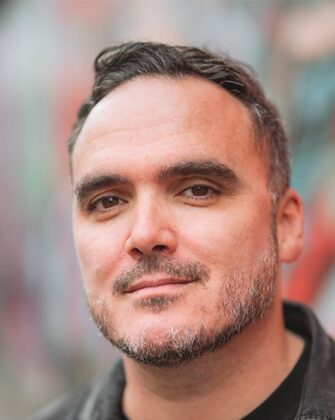What is double diamond?
The double diamond is a framework developed by the Design Council. The Design Council surveyed creatives from all around the world and, despite many of them having different ways of working, they noticed some shared commonalities when it came to the creative process.
The result of this was the double diamond, a structured map that visualises the process, though it’s equally applicable to most forms of problem solving:
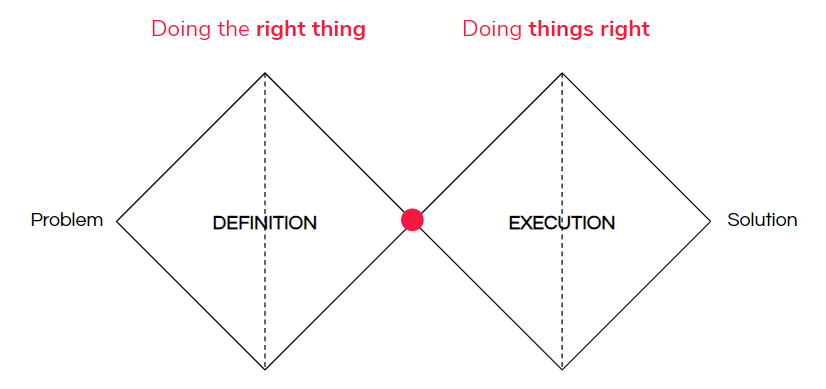
The double diamond breaks down the creative process into four sections:
- Discover
- Define
- Develop
- Deliver
This is paired with two types of thinking:
- Divergent thinking – where lots of ideas are created
- Convergent thinking – where ideas are narrowed and refined into the best idea
Together these are represented by two diamonds – one for identifying what the problem is, and one for the solution.
Without the former of the two diamonds, you risk committing one of the greatest mistakes of creative work – solving the wrong problem.
How to apply double diamond
Think of a task that you have on your workflow. It could be to design a new website for your business or create a new marketing campaign.
The first thing you have to do is discover what the problem is you’re trying to solve with this project.
Discover
At this stage, you should think broadly, keep an open mind and start building insights into what you think the problem is, to a deadline.
You could collaborate with your colleagues on this, go about user research or look into your data. The overall goal is to glean insights into your problem, even if that means ripping up the brief.

Define
Your goal here is to create a ‘clear creative brief that frames the fundamental challenge.’ Here you use convergent thinking to narrow down the best ideas, look at what’s feasible and realistic. Write this down and define a clear, actionable brief.
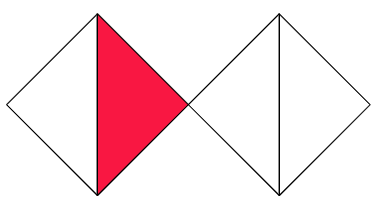
From here, you identify the right problem. You may wish to confirm this with your client, team or manager to ensure you’re on the right path. If you’re not, fail fast and start again. You need to have identified the right problem. Perhaps a client thinks they need an app, whereas your research shows they need a website. Perhaps a client wants to plough money into PPC when actually some time spent optimising their website would be more cost-effective.
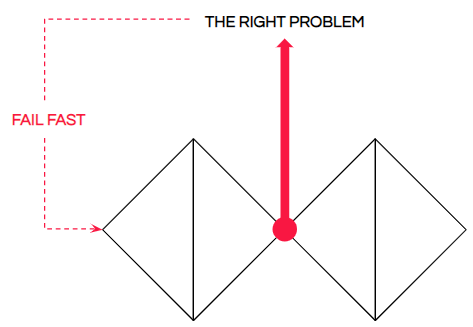
Develop
With your new brief and the right problem in mind, you can employ divergent thinking to start developing your solution.
This could involve proof of concept, where you test your ideas and start experimenting. Your ultimate goal here is to work out the best way of doing things.
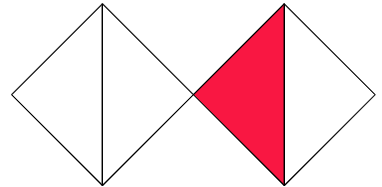
Ensure you keep your customer personas in mind and look at a few different scenarios where a user will use your product or service.
Deliver
This is where you build the solution that solves the problem.
Employing convergent thinking, you narrow down your ideas and build your solution once, properly and quickly.
Focus on executing the right solution with minimal margin for error.

Summary
The double-diamond is a shared framework for creative thinking and a visual map for problem-solving. It is a systemised way of exploring good ideas and executing the best ones. Whilst you may look at applying it to web, illustration or graphic design, it’s equally as applicable if you were planning an event or building a new marketing campaign.
You can put it into action by:
- Brainstorming all ideas before starting the work
- Gathering as many ideas as possible: there are no wrong answers!
- Setting a deadline, refine ideas into the best one
- Confirming the brief again if needed
- Brainstorming the best way to do it
- Focusing on executing the right solution
What it also highlights is that the best ideas come from iteration and collaboration. Other people will have different experience, different views and even a different eye for design that you should consider.
Working together will help you get fresh ideas with which to narrow down the problem and create the perfect solution, every time.
If you have a creative or marketing problem and would like some assistance, get in touch.

